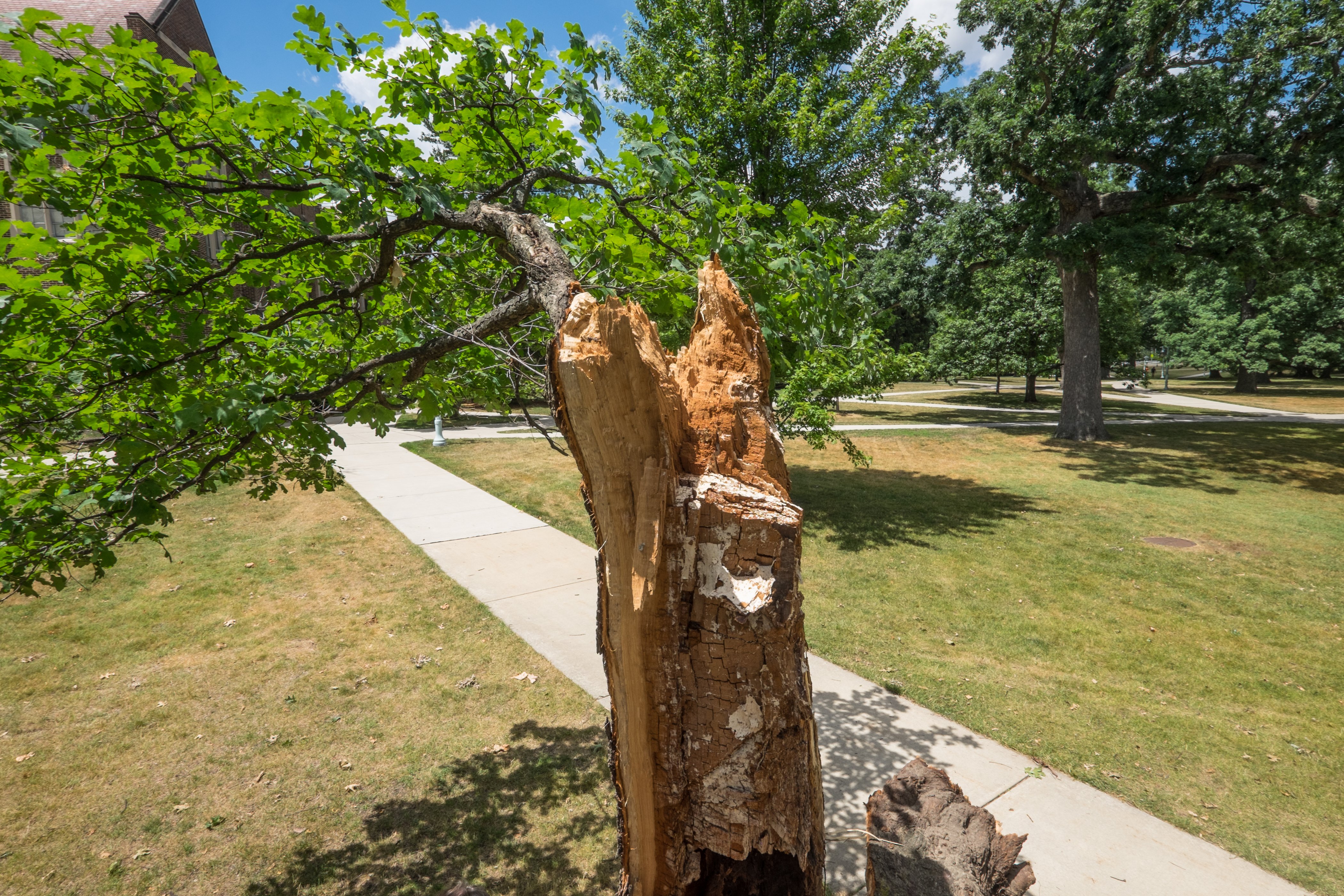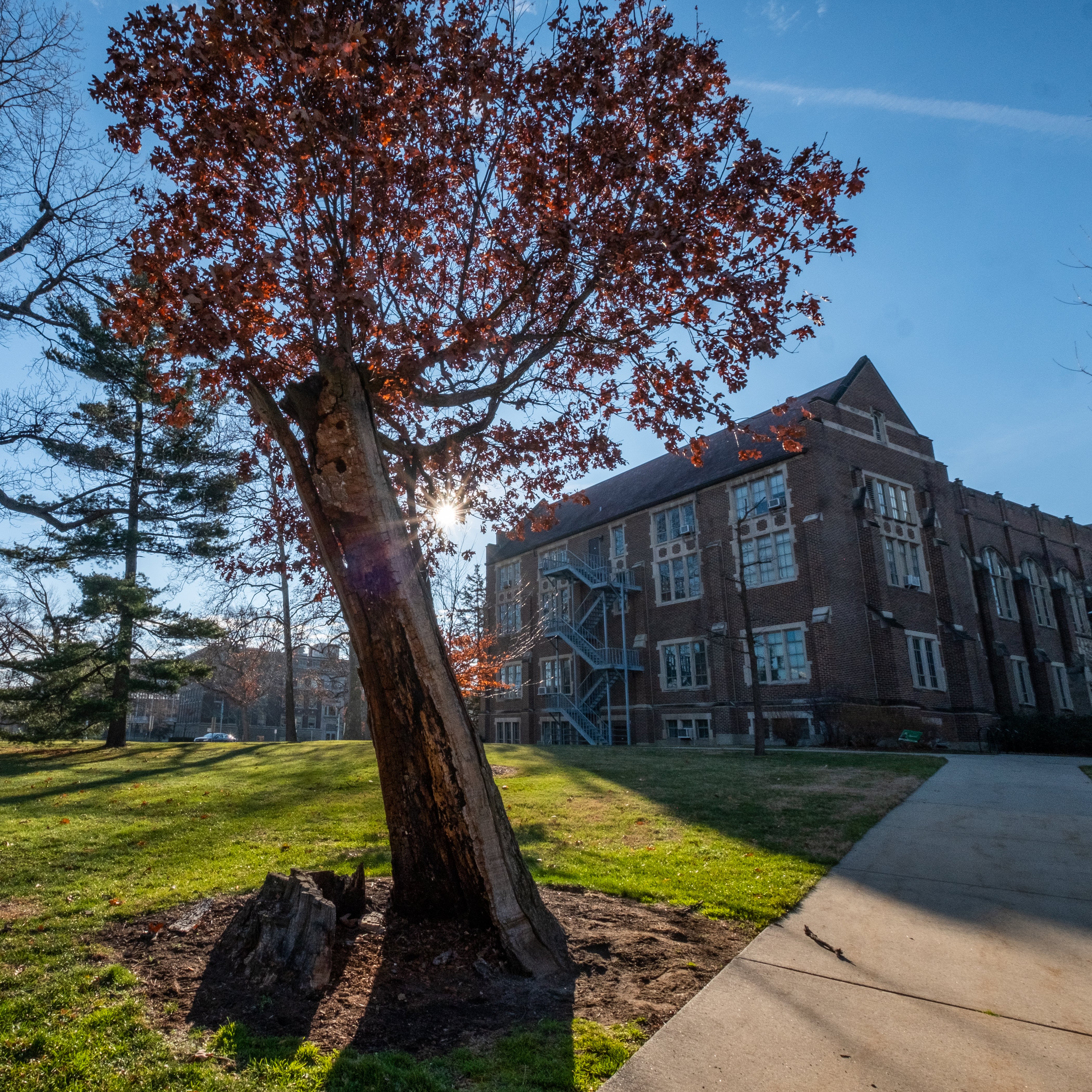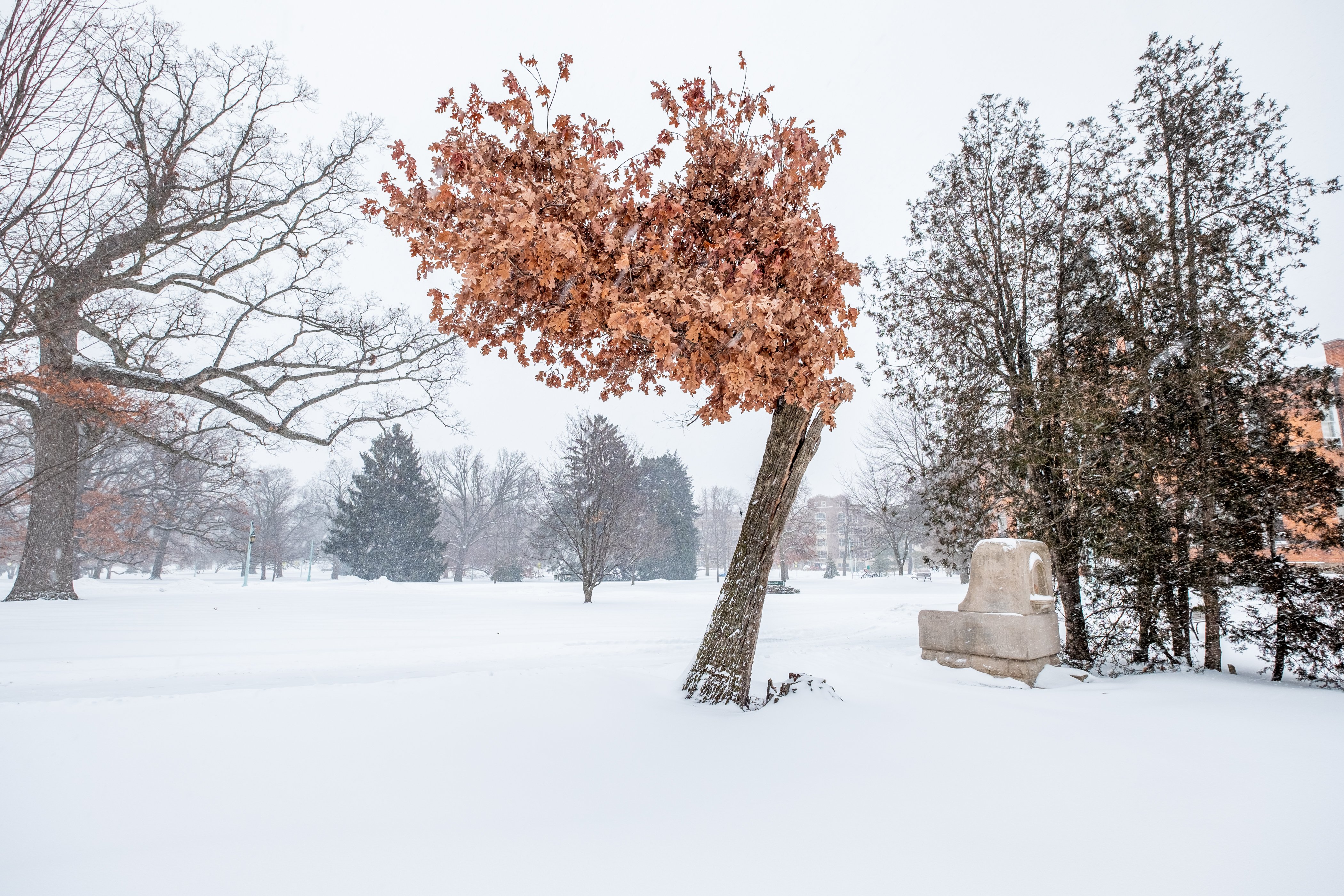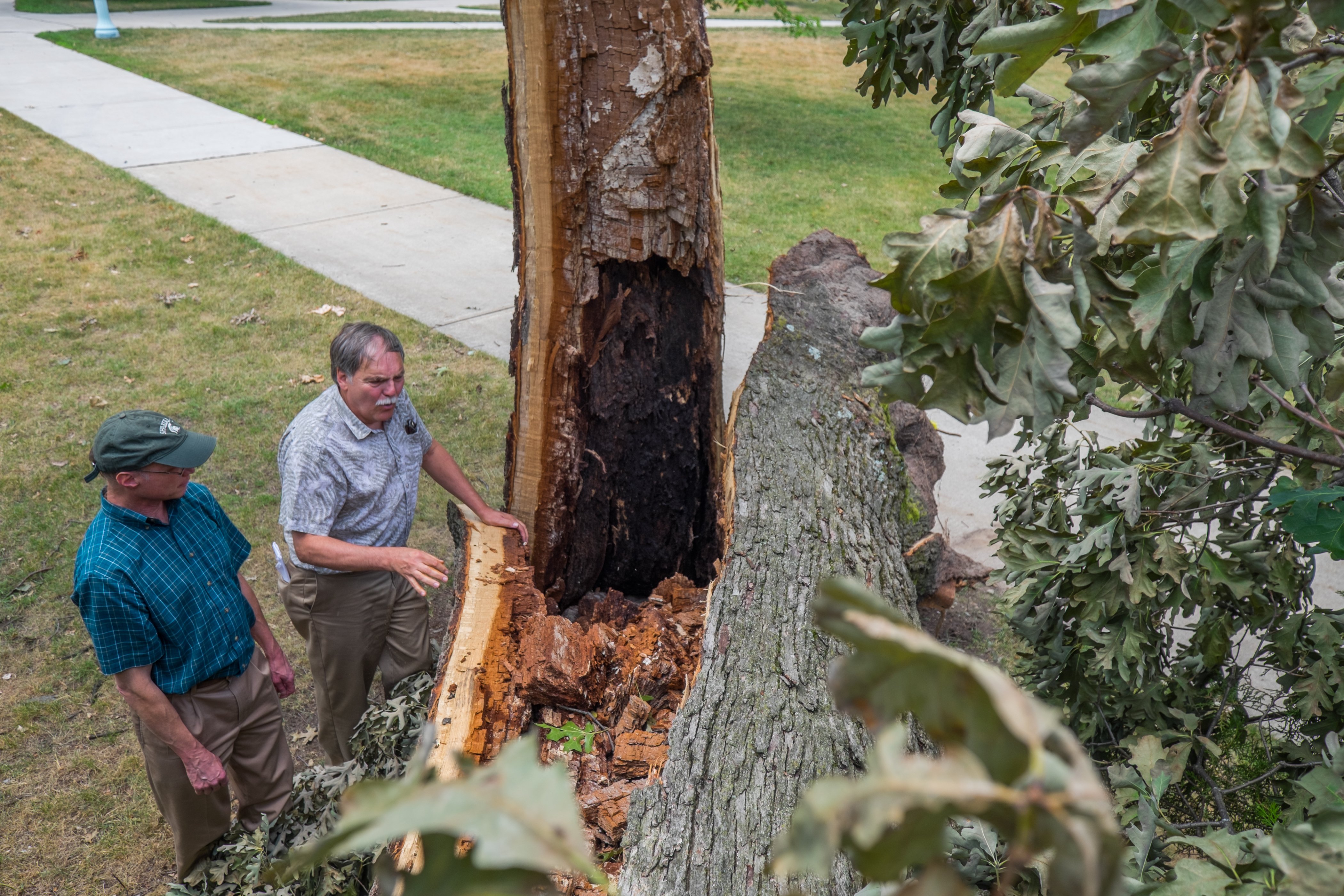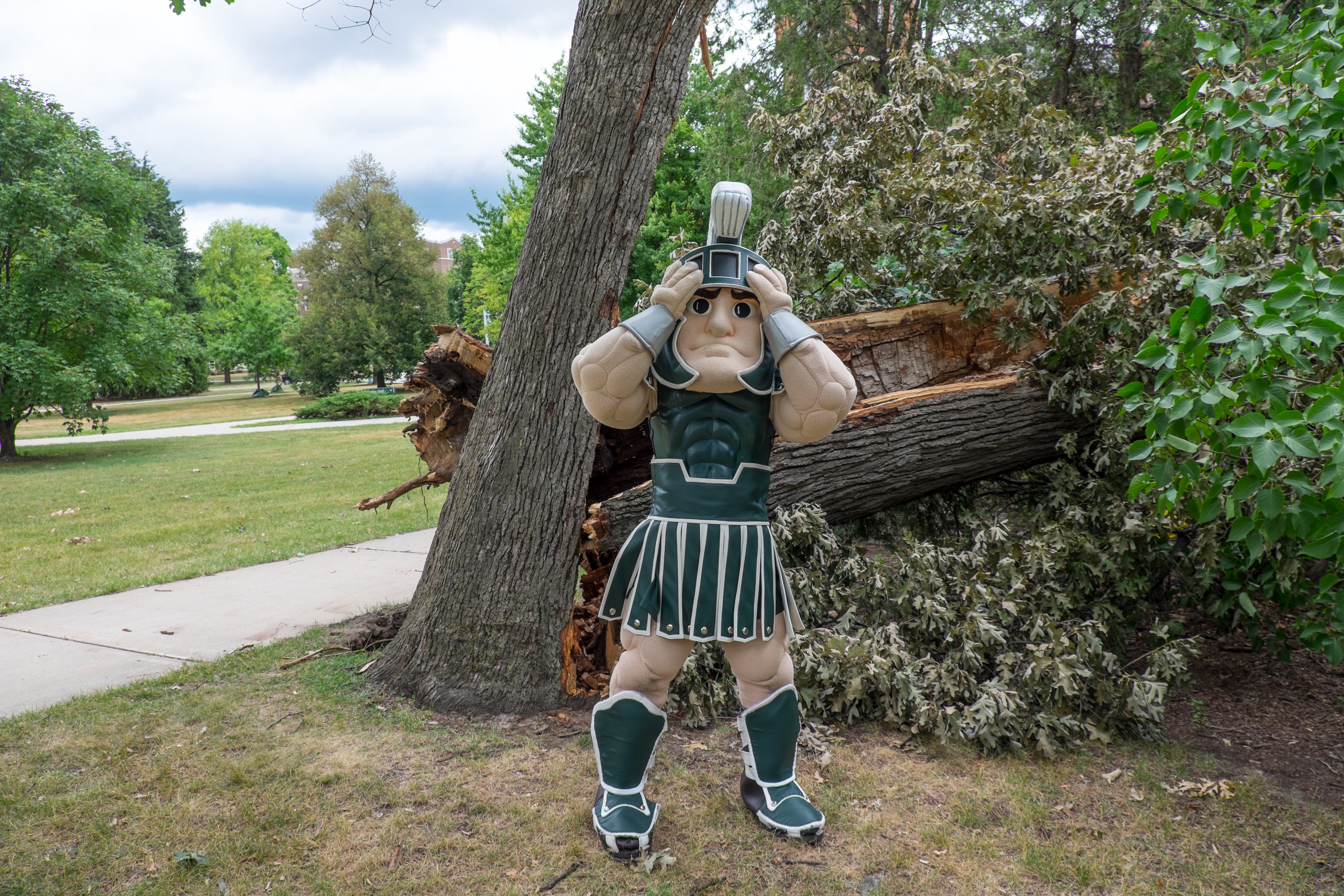Beal Botanical Garden’s Spartan Tree Stories
8. The Resilient Oak
Quercus alba
What you see before you is what remains of a 375-400 year-old survivor. This tree was topped about 100 years ago, has had much of its roots cut to put in the sidewalk that you are standing on, and was blown over in a windstorm in 2016. In his book on the history of Michigan Agricultural College, Professor Beal (1915) reported that when the land around the future location of College Hall (now the location of Beaumont Tower) was developed, some of the subdominant trees were left standing. However, they were tall and spindly with a crown at the very top of each tree. The administration at the time hired a student to climb and top the trees to induce them to branch out with the hope of creating a broader canopy. As Professor Beal notes in his book, this created a problem leading to the decline and death of many of the surviving trees. The few that did survive were subjected to decay spreading from the cut down the trunk. To reduce the infiltration of rainwater down the center wound, the university placed metal caps over the cuts.
On July 8, 2016, a strong thunderstorm passed over campus with strong, straight-line winds blowing down many trees including this oak tree. When Jeff Wilson and I surveyed the damage after 4:30 p.m. after the storm passed, I noticed that this tree that had been blown over had a metal cap as described by Professor Beal. I knew many of these old oak trees were likely survivors from the old forest, but I did not have any proof. Many of these trees are hollow and can not be dated using tree rings. However, this windblown tree provided me an opportunity to try to date the tree using a solid section of the trunk farther up the tree. About 20 feet above the base of the tree was a section of trunk that included solid wood from the bark to the pith. I began counting the tree rings. To my surprise, the tree had 347 annual growth rings at this position in the trunk. Given the slow growth of this suppressed, subdominant tree, it is highly possible that this tree is somewhere between 375 and 400 years old. This sheds new light on all of the surviving oaks in the Oval, indicating that they are between 300 and 400+ years old.
Fortunately, when the tree was blown over, a single portion of the trunk remained with a single branch. Knowing the age and historic importance of this tree, I insisted that the surviving part of the tree not be removed, and that this tree be recognized as an original survivor of the forest that once covered the MSU campus prior to 1855. In the fall of 2017, Dean Christopher Long named the tree the Resilient Oak and used it as the focus of his letter to incoming freshmen students on the need to be resilient and face the challenges they will face in the coming years.
- Dr. Frank W. Telewski
Retired, Director of W. J. Beal Botanical Garden and Campus Arboretum
Professor Emeritus, Department of Plant Biology
Read more about the Resilient Oak here.
References:
Beal, William James (1915). History of the Michigan Agricultural College: And Biographical Sketches of Trustees and Professors. Agricultural college.
